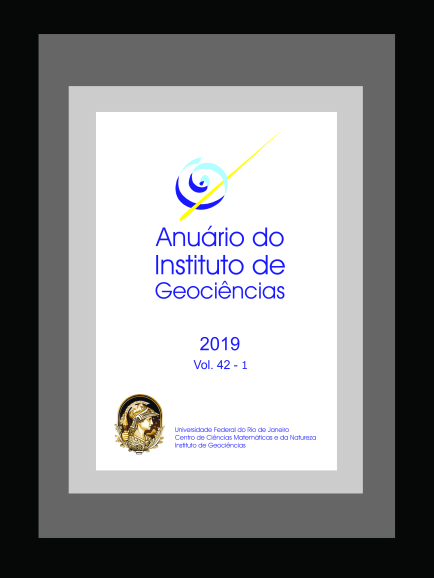Palynofacies Analyses of Fox Bay Formation (Devonian), Falkland Islands
DOI:
https://doi.org/10.11137/2019_1_07_19Keywords:
Palynofacies, Fox Bay Formation, Devonian rocks, Falkland IslandsAbstract
The Falkland Islands are an archipelago consisting two main islands (West and East) that show contrasts in their sedimentary history. The palynofacies analysis was applied as tool for reconstructing the history of sedimentary organic matter deposition during the Devonian. The material derives from the Fox Bay Formation that crops out in the East and West Falklands. Spore Color Indices (SCI) and Total Organic Carbon (TOC) also were conducted. Seven kerogen categories were identified: amorphous organic matter (AOM), opaque phytoclasts, Spongiophyton, acritarchs, prasinophycean algae and spores. In general, the samples are carbonized, in particular the AOM that is most abundant, and are distinguished into two subgroups: amorphous organic matter (AOM) and amorphous organic matter carbonized (AOMc). Four palynofacies associations were identified: Palynofacies A, which is composed of prasinophycean algae and acritarchs, Palynofacies B of spores and AOMc, Palynofacies C of phytoclasts and Spongiophyton; and Palynofacies D only of AOM. The results confirm a differentiation between the West and East islands. In fact, this reflects the abundance of AOM and AOMc, respectively. In West Falkland the sedimentary organic matter is not completely carbonized indicated by a lower abundance of AOMc as a result of a lesser thermal influence caused probably by movement of the Hornby Mountains Fault.Downloads
Download data is not yet available.
Downloads
Published
2019-12-01
How to Cite
Carvalho, M. de A. (2019) “Palynofacies Analyses of Fox Bay Formation (Devonian), Falkland Islands”, Anuário do Instituto de Geociências. Rio de Janeiro, BR, 42(1), pp. 7–19. doi: 10.11137/2019_1_07_19.
Issue
Section
Article
License
This journal is licensed under a Creative Commons — Attribution 4.0 International — CC BY 4.0, which permits use, distribution and reproduction in any medium, provided the original work is properly cited.















